
Orientalism is a term used by scholars in art history, literary, geography, and cultural studies for the depiction of Eastern, that is "Oriental" cultures, including Middle Eastern, South Asian, African and East Asian cultures, done by writers, designers, and artists from the West.
Geographically, Orientalism was linked to the Ottoman Empire, with its various nations and cultures.
A style known as Turquerie, which began as early as the late 15th century, continued until at least the 18th century, and included both the use of "Turkish" styles in the decorative arts, the adoption of Turkish costume at times, and interest in art depicting the Ottoman Empire itself. Venice, the traditional trading partner of the Ottomans, was the earliest centre, with France becoming more prominent in the 18th century.
Although the majority of Orientalists showed the Muslim culture and everyday life, they could not ignore the beauty and elegance of Armenians women.
The first European artist who showed interest in oriental life was French painter Jean Baptiste Vanmour (1671 – 1737). After being appointed France’s ambassador to Turkey in 1699, he painted hundreds of canvasses, including four Armenian life scenes.

Jean Baptiste Vanmour, “Armenian Wedding”, 1720-30s, Rijksmuseum, Amsterdam
Although it doesn’t reveal the peculiarities of Armenian culture, this painting tells the European viewers about the basic elements of Armenian wedding feast.
The other three paintings were created during the same period of time.
One of them, called “Party of Armenians playing cards” and displayed in Rijksmuseum(the Museum of the Netherlands), depicts an evening from the life of Armenian grand people. The artist documents the details of the clothing like fur-trimmed coats Armenian men used to wear and accessories.
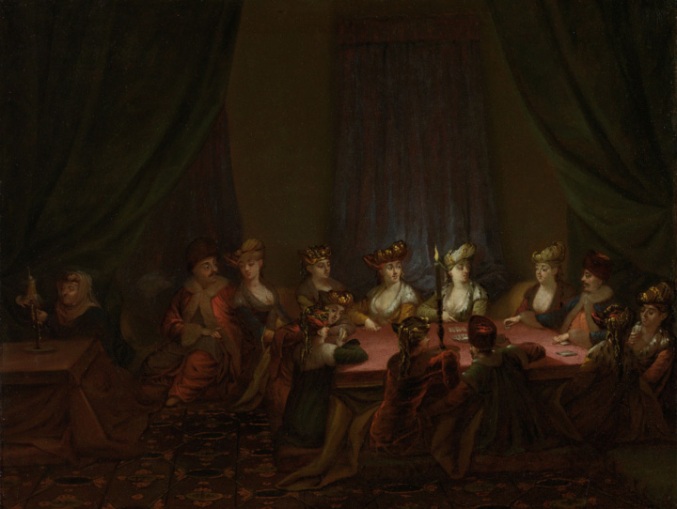
Jean Baptiste Vanmour, “Party of Armenians playing cards”
Another painting in Rijksmuseum is called “The Conversation”. It shows Armenian women drinking coffee with gentleman. As always, the interior and clothes are depicted in every detail.

Jean Baptiste Vanmour, “The Conversation”
The painting called “Armenian women embroidering” is displayed in a museum in Istanbul, Turkey. In shows Armenian-style dressed women in Ottoman interior.
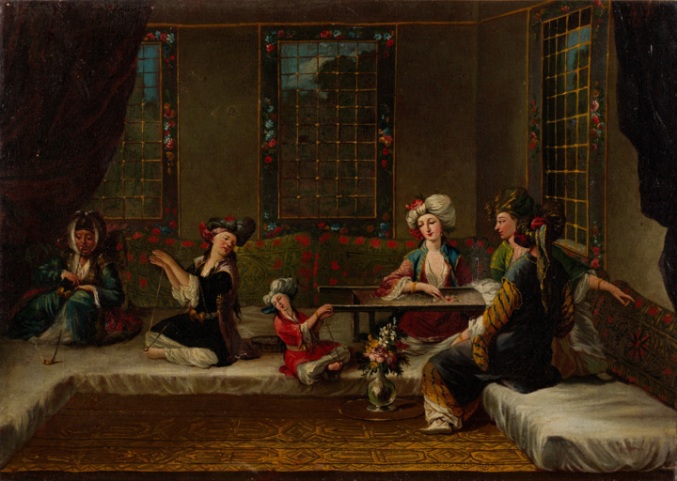
Jean Baptiste Vanmour, “Armenian women embroidering”
Another famous painting of an Armenian woman was created by British orientalist John Frederick Lewis (1804-1876). “The Armenian Lady, Cairo” shows a woman with beautiful features resting on the sofa. The painting is displayed at Orientalist Museum in Doha, Qatar.

John Frederick Lewis, “The Armenian Lady, Cairo”, 1855
American artist John Henry van Lennep (1815-1889) has some works on Armenian theme. These include “Armenian Bride”, “Armenian Lady at Home”, “Armenian Peasant Woman”, “Armenian Women at Home”, “Armenian and Turkish Ladies Abroad.”
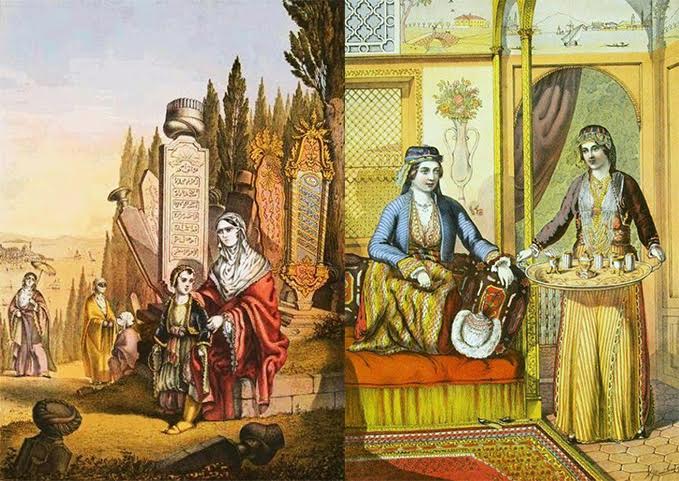
“Armenian and Turkish Ladies Abroad” on the left, “Armenian Women at Home” on the right
Well-known American Orientalist Frederick Arthur Bridgman’s (1847-1928) “Armenian Woman" is described as one of the best works on the Armenian theme. It shows the beauty of an Armenian lady and her costume.
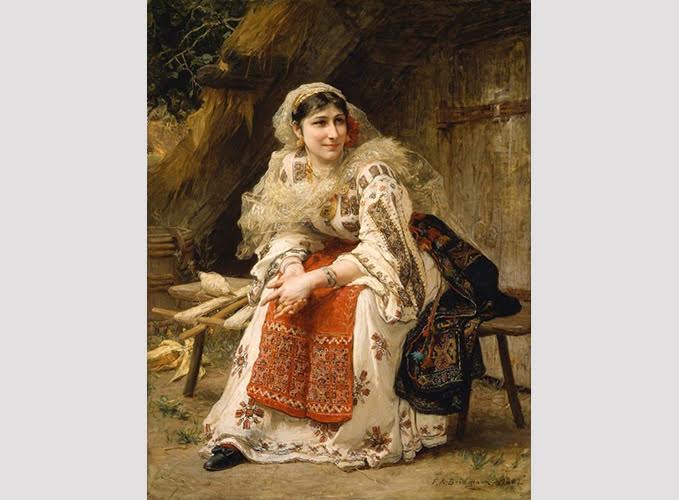
Frederick Arthur Bridgman, “Armenian Woman", 1882
It’s noteworthy that Armenian women attracted attention of artists, who were not Orientalists. American painter Ralph E. Clarkson (1861-1942) depicted Armenian singer Nouvart Dzeron-Koshkarian, naming the painting “Nouvart Dzeron, a Daughter of Armenia”.
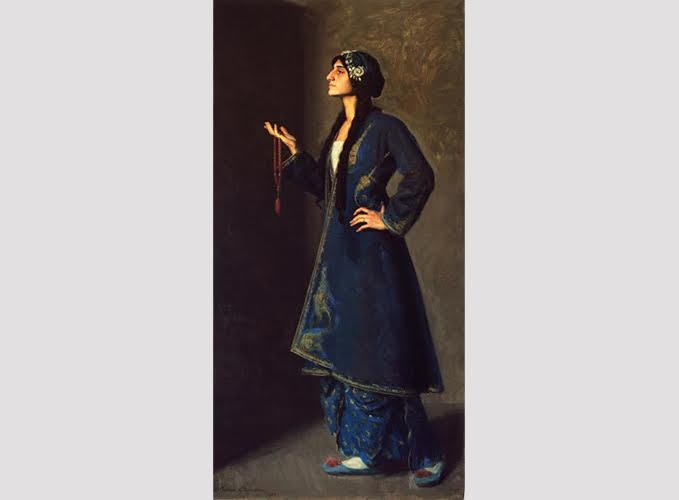
Ralph E. Clarkson, “Nouvart Dzeron, a Daughter of Armenia”, 1912
Finally, French portraitist Charles Landelle (1821-1908) created a canvass titled “An Armenian Woman” that is a part of the Wallace Collection, London.
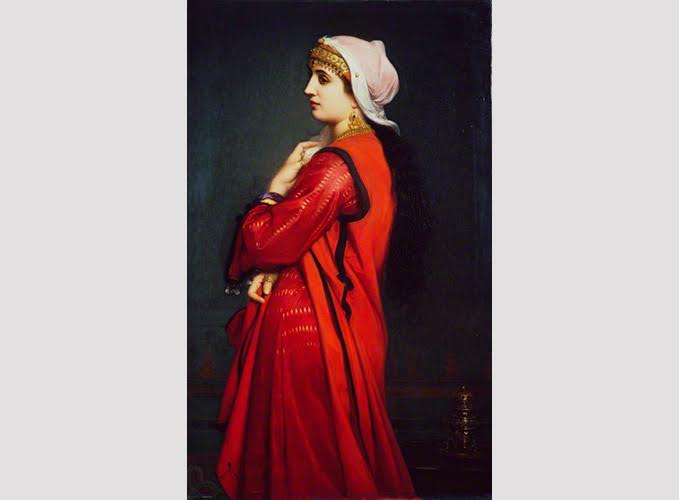
Charles Landelle, “An Armenian Woman”, 1866

